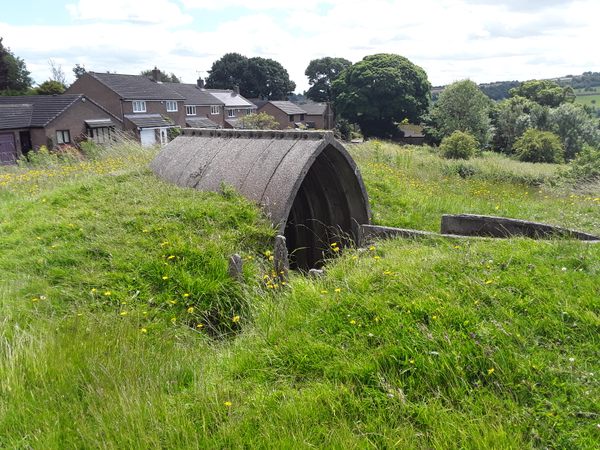“Tump” is an old-fashioned English term for a mound, usually one made of earth. At Bailey’s Tump, which was named for landowner Ernest Bailey, the mound arose from excavations to install the massive iron pipeline that formed the Derwent Valley Aqueduct to carry water from the Derwent, Howden, and (later) the Ladybower reservoirs (over 20 miles north) to the industrial cities of the East Midlands.
At the outbreak of World War II in 1939, the mound was used to create an air defense installation as part of the outer ring of defenses for both the steelworks of Sheffield to the northeast and Derby, with its locomotive works and Rolls Royce Aero Engine Factory to the south. Although it was provided with sound detectors and a searchlight (and the required electrical generators) its anti-aircraft armament was limited to twin machine guns. This proved adequate to allow gunners to damage a Dornier bomber in 1940, but not before the aircraft shot out the searchlight. The plane subsequently crashed at Great Longstone a few miles west.
Later in the war, the searchlight was pointed upwards as a navigation beacon for RAF night bombers attacking Germany. Also on site is part of a Stanton sectional concrete air raid shelter for crew use which was widely installed at military sites in Britain during WWII.
The site was restored in 2006 by the Matlock Civic Society and an informative bronze plaque was provided.

